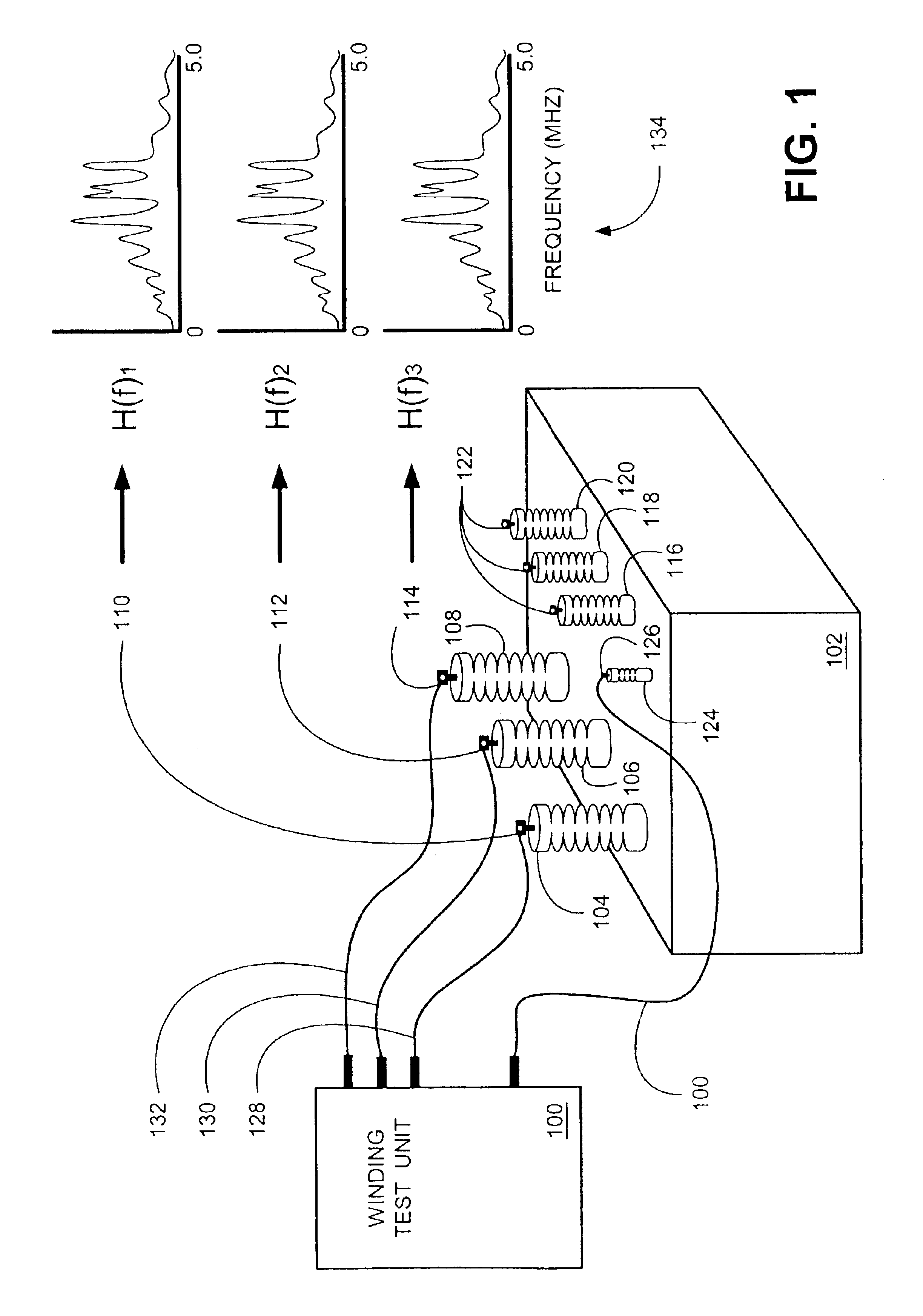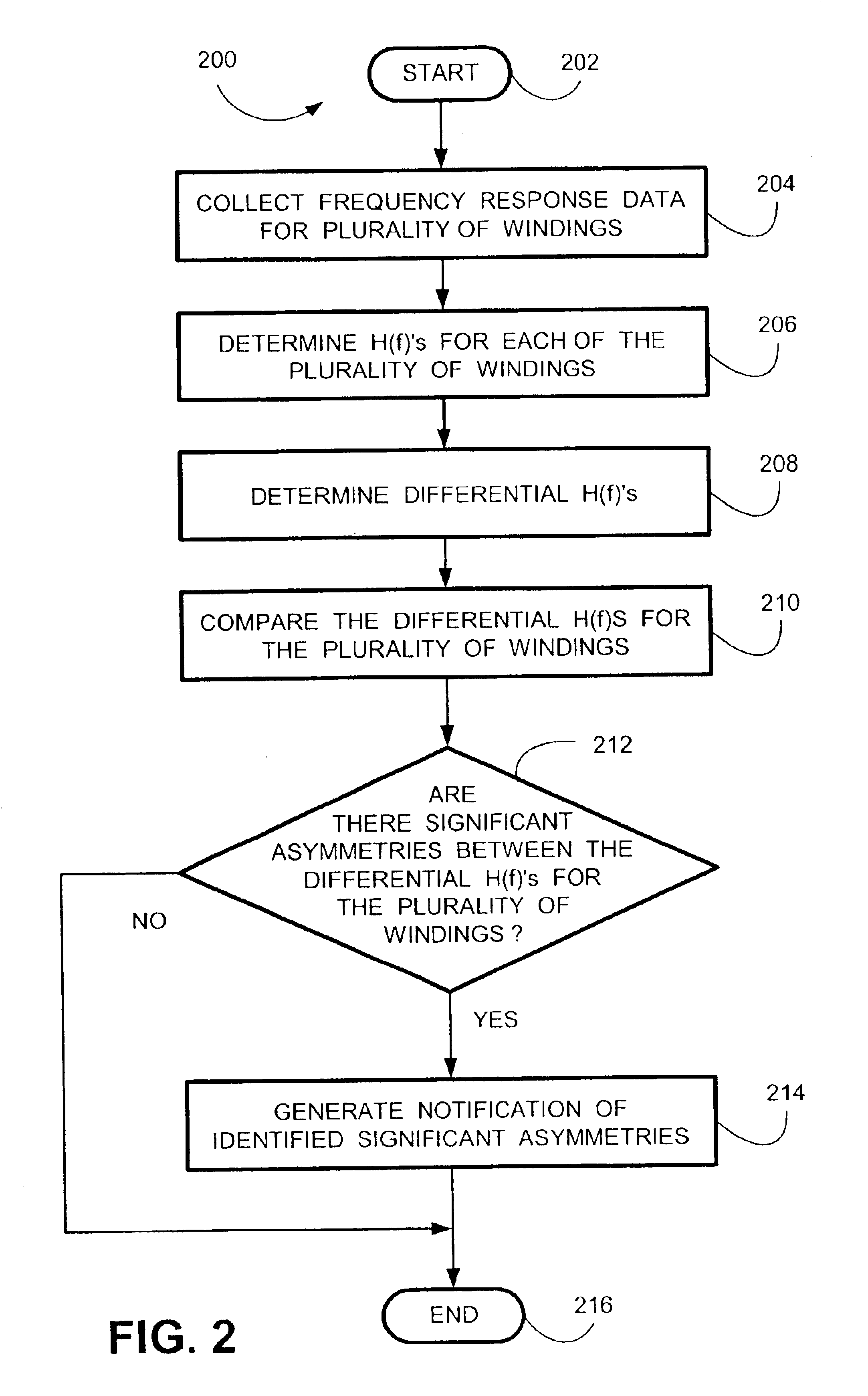Systems and methods for multiple winding impulse frequency response analysis test
a technology of impulse frequency response and system and method, applied in hydrodynamic testing, instruments, nuclear elements, etc., can solve the problems of large current flow, undesirable transformer fault, large fault current flowing through the transformer,
- Summary
- Abstract
- Description
- Claims
- Application Information
AI Technical Summary
Problems solved by technology
Method used
Image
Examples
Embodiment Construction
A. Overview of the Transformer Testing System and Method
FIG. 1 is a simplified conceptual diagram of an embodiment of a winding test unit 100 coupled to a transformer 102. Winding test unit 100 provides for determining normal and / or abnormal characteristic signatures of same-voltage windings residing in a device, such as transformer 102, without the need for a comparison to past historical data, and, in one embodiment, without the need for subjective expert opinions, by identifying significant asymmetries in differential characteristic signatures [H(f)'s]. Differential H(f)'s are, in one embodiment, determined by computing the difference between pairs of H(f)'s determined for a plurality of transformer windings.
Transformer 102 is a well known voltage conversion device employed in energy delivery systems. Transformer 102 is illustrated for convenience as a three phase transformer unit as having three high voltage bushings 104, 106 and 108. For simplicity, detailed operation of the tr...
PUM
 Login to View More
Login to View More Abstract
Description
Claims
Application Information
 Login to View More
Login to View More - R&D
- Intellectual Property
- Life Sciences
- Materials
- Tech Scout
- Unparalleled Data Quality
- Higher Quality Content
- 60% Fewer Hallucinations
Browse by: Latest US Patents, China's latest patents, Technical Efficacy Thesaurus, Application Domain, Technology Topic, Popular Technical Reports.
© 2025 PatSnap. All rights reserved.Legal|Privacy policy|Modern Slavery Act Transparency Statement|Sitemap|About US| Contact US: help@patsnap.com



